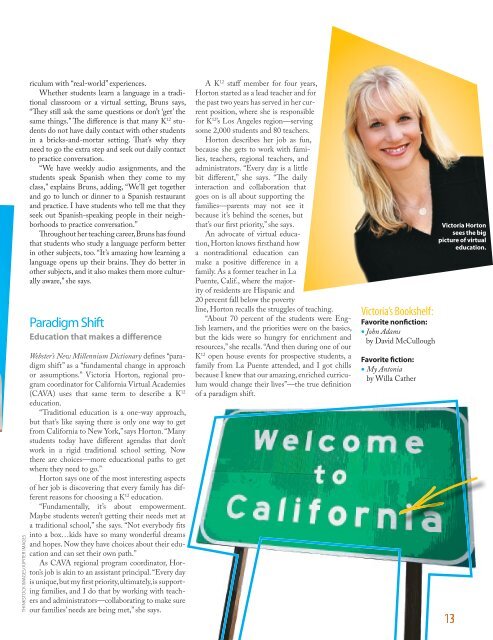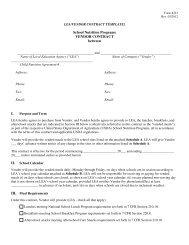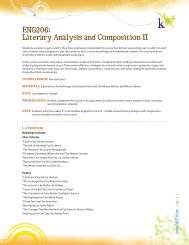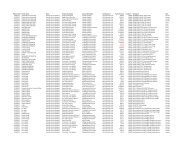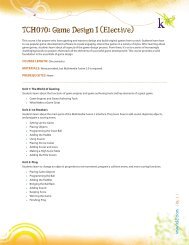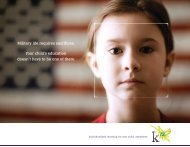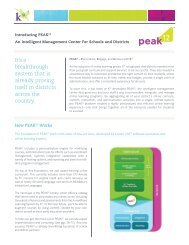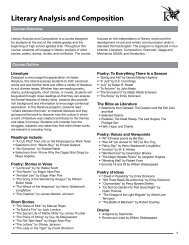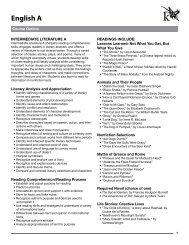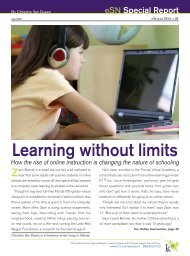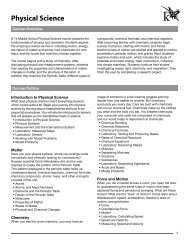It All Adds Up - K12.com
It All Adds Up - K12.com
It All Adds Up - K12.com
You also want an ePaper? Increase the reach of your titles
YUMPU automatically turns print PDFs into web optimized ePapers that Google loves.
THINKSTOCK IMAGES/JUPITER IMAGESriculum with “real-world” experiences.Whether students learn a language in a traditionalclassroom or a virtual setting, Bruns says,“They still ask the same questions or don’t ‘get’ thesame things.” The difference is that many K 12 studentsdo not have daily contact with other studentsin a bricks-and-mortar setting. That’s why theyneed to go the extra step and seek out daily contactto practice conversation.“We have weekly audio assignments, and thestudents speak Spanish when they come to myclass,” explains Bruns, adding, “We’ll get togetherand go to lunch or dinner to a Spanish restaurantand practice. I have students who tell me that theyseek out Spanish-speaking people in their neighborhoodsto practice conversation.”Throughout her teaching career, Bruns has foundthat students who study a language perform betterin other subjects, too. “<strong>It</strong>’s amazing how learning alanguage opens up their brains. They do better inother subjects, and it also makes them more culturallyaware,” she says.Paradigm ShiftEducation that makes a differenceWebster’s New Millennium Dictionary defines “paradigmshift” as a “fundamental change in approachor assumptions.” Victoria Horton, regional programcoordinator for California Virtual Academies(CAVA) uses that same term to describe a K 12education.“Traditional education is a one-way approach,but that’s like saying there is only one way to getfrom California to New York,” says Horton. “Manystudents today have different agendas that don’twork in a rigid traditional school setting. Nowthere are choices—more educational paths to getwhere they need to go.”Horton says one of the most interesting aspectsof her job is discovering that every family has differentreasons for choosing a K 12 education.“Fundamentally, it’s about empowerment.Maybe students weren’t getting their needs met ata traditional school,” she says. “Not everybody fitsinto a box…kids have so many wonderful dreamsand hopes. Now they have choices about their educationand can set their own path.”As CAVA regional program coordinator, Horton’sjob is akin to an assistant principal. “Every dayis unique, but my first priority, ultimately, is supportingfamilies, and I do that by working with teachersand administrators—collaborating to make sureour families’ needs are being met,” she says.A K 12 staff member for four years,Horton started as a lead teacher and forthe past two years has served in her currentposition, where she is responsiblefor K 12 ’s Los Angeles region—servingsome 2,000 students and 80 teachers.Horton describes her job as fun,because she gets to work with families,teachers, regional teachers, andadministrators. “Every day is a littlebit different,” she says. “The dailyinteraction and collaboration thatgoes on is all about supporting thefamilies—parents may not see itbecause it’s behind the scenes, butthat’s our first priority,” she says.An advocate of virtual education,Horton knows firsthand howa nontraditional education canmake a positive difference in afamily. As a former teacher in LaPuente, Calif., where the majorityof residents are Hispanic and20 percent fall below the povertyline, Horton recalls the struggles of teaching.“About 70 percent of the students were Englishlearners, and the priorities were on the basics,but the kids were so hungry for enrichment andresources,” she recalls. “And then during one of ourK 12 open house events for prospective students, afamily from La Puente attended, and I got chillsbecause I knew that our amazing, enriched curriculumwould change their lives”—the true definitionof a paradigm shift.Victoria’s Bookshelf:Favorite nonfiction:• John Adamsby David McCulloughFavorite fiction:• My Antoniaby Willa CatherVictoria Hortonsees the bigpicture of virtualeducation.13


